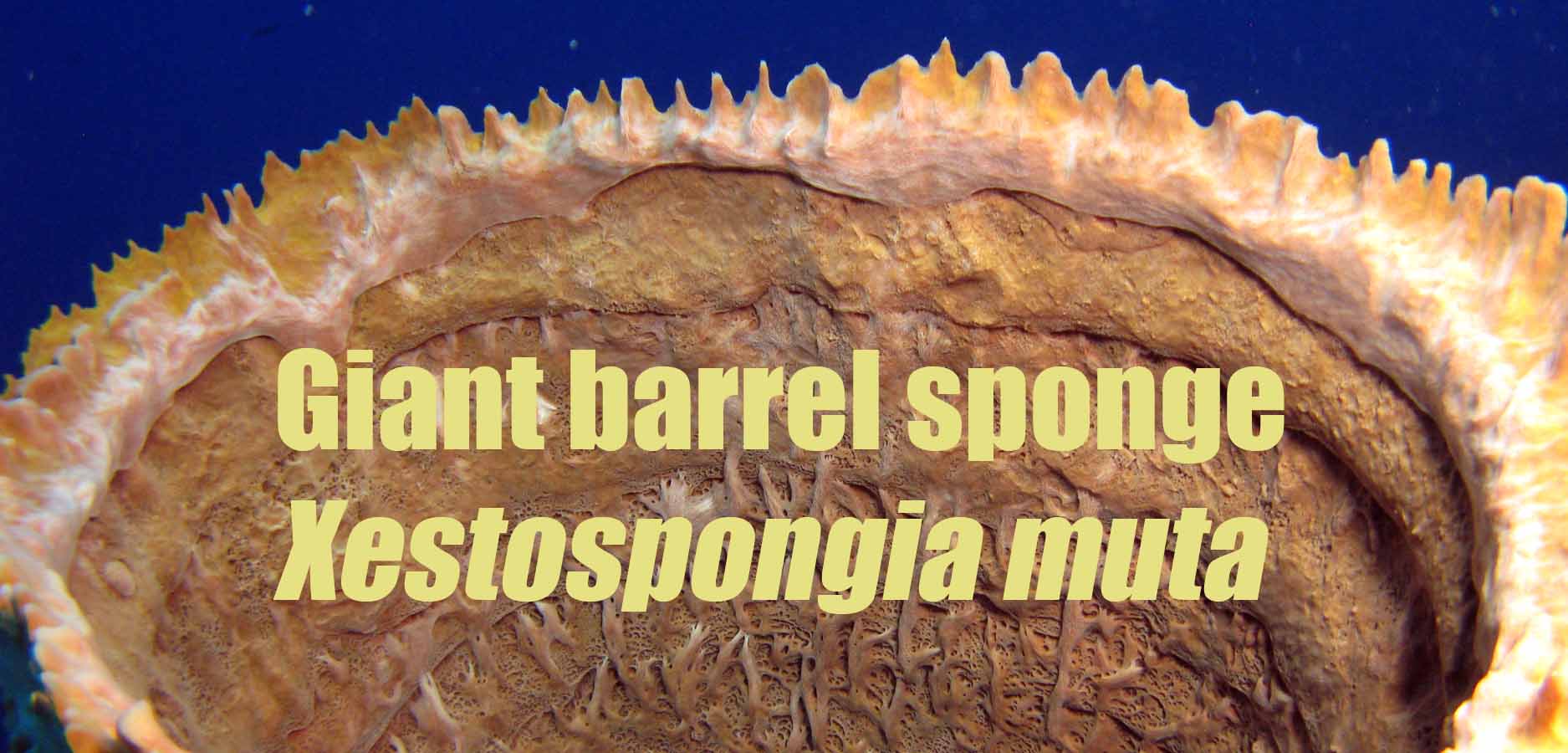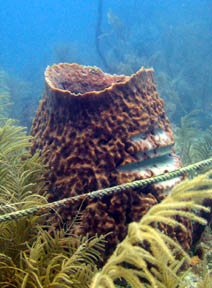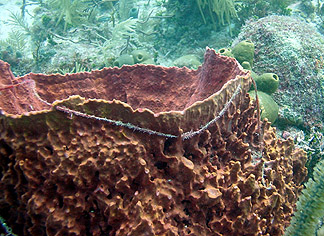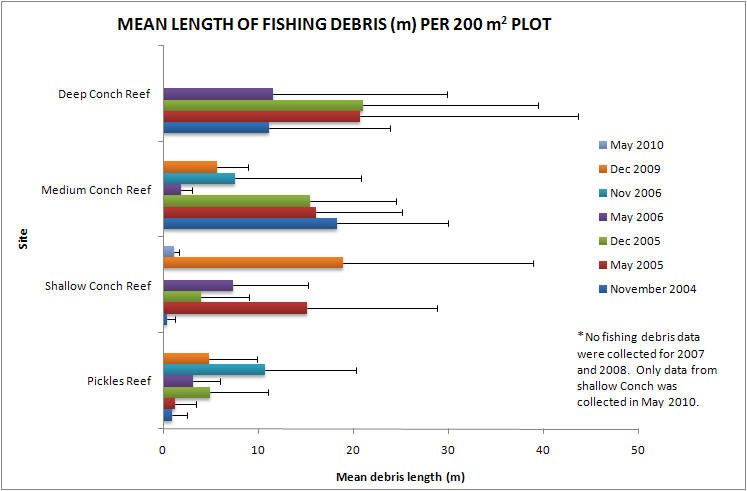People:
Joseph Pawlik
Graduate students
Information for undergrads and
prospective grad students
Science:
Marine chemical ecology
Giant barrel sponge Xestospongia muta
Marine invertebrate larval
biology
Photographic guide to sponges of the Caribbean
Courses:
BIO 318:
Invertebrate
Zoology
BIO 501: Science as a Profession
| HOME |

Monofilament Line and Marine Debris
Several assessments of the threat of
anthropogenic debris to coral reef ecosystems have been published
(e.g., Donohue et al., 2001; Chiappone et al., 2002). Marine debris is a
well-recognized threat to marine vertebrates, including whales, dolphins, and
turtles, but the impacts on benthic marine invertebrates are less well
understood.
| All manner of
materials related to recreational and commercial fishing, boating, and SCUBA
diving can be found on Florida’s reefs, where they may persist for months to
years. In a survey of 45 sites in the
Florida Keys
National Marine Sanctuary between Big Pine Key and Key West,
Chiappone et al. (2002) found that monofilament line made up 38% of total
debris and was the class of debris most often responsible for causing tissue
abrasion, damage, or mortality to sessile invertebrates. Rope from
lobster and crab pots also poses a threat to these organisms (right).
|
 |
 |
Xestospongia muta appears to be particularly susceptible to damage by marine debris. The tissue of this species is solid, non-elastic, and slices easily. In over a decade of research at the Conch Reef site in Key Largo, we have encountered several examples of medium to large X. muta that had been bisected, both horizontally and vertically. Sliced portions of sponges can be found in the sand between hardbottom spurs – these cannot reattach themselves, and are slowly worn away by abrasion. |
We have begun to quantify the amount of monofilament line found within our transects. Below are data on total length of monofilament line collected at each site during surveys over the last 5 years. Conch Reef is in a Special Protected Area (SPA), and should experience no fishing, but the deep water non-SPA area immediately to the East is a well known swordfishing location, and many sport fishermen know that Conch Reef has large groupers and snappers after many years of protection and because of the presence of the Aquarius habitat. It is likely that the high levels of fishing debris on Conch Reef reflect illegal fishing there. Pickles Reef is not in a SPA and has a flatter topography than Conch Reef, making it less attractive for fishing, yet it has also yielded substantial amounts of fishing line.

References:
-
Chiappone, M., White, A., Swanson, D.W., Miller, S.L. 2002. Occurrence and biological impacts of fishing gear and other marine debris in the Florida Keys. Mar. Pollution Bull. 44:597-604.
-
Donohue, M.J., Boland, R.C., Sramek, C.M., Antonelis, G.A. 2001. Derelict fishing gear in the Northwestern Hawaiian Islands: Diving surveys and debris removal in 1999 confirm threat to coral reef ecosystems. Mar. Pollution Bull. 42:1301-1312.
X. muta
|
Population Dynamics
| Bleaching |
Monofilament Line
|
Age
